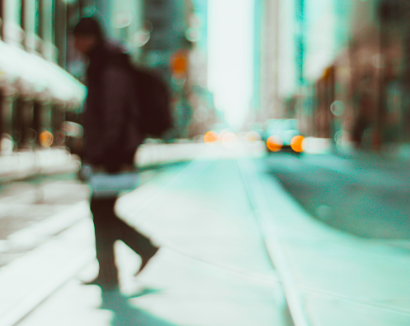Citizen Walkers | Pt.2

We reached out to our friend Adam Davidson, adjunct faculty with Judy Genshaft Honors College about contributing for this column. He teaches a course called Citizen Walkers that perfectly embodies the heart of the Be Pedestrian column. He shared a recently completed essay about the course, while it was a bit long for a single post, last week was the first of a 4 week series created from Adams' paper. Below is the second in the series:
Relational: Walking is deeply connected to our sense of our place in the world in relation to others. Very few of us pull a Star Trek and “go where no one has gone before.” Our steps are ordered by those who have gone before us. Paths and sidewalks were put there or worn there by someone else. Even following an animal track of a lowly armadillo is a point of connection between us and some other life. In that sense, our walking is almost always, without fail, just that, a point of connection to someone or something else. When we become reflective about those things, we start to consider the relationships and connections that form us as well as the ones we are shaping and working to maintain, or avoid.
Of course, walking can be more overtly relational when we walk with someone. Even conversations are transformed when you pace along with a friend or a child or a coworker. In face to face interaction, we confront one another, whether in an actual confrontation or even just in friendly banter, but in walking next to someone, we see with them, we move with them, and our rhythms align. (Lee and Ingold)
I have a friend who began his work with the homeless by walking with them, seeking to understand their experience of having to walk all the time while having no place to go. However, I don’t think he intended merely to understand the experience of homelessness, though that is important. He also wanted to be with people who are almost always avoided and alone, to dignify a life, a person, often feared or discarded. Walking with the homeless in that sense changed him as much as it also afforded him opportunities to understand their experiences and to find ways to help. In walking with another, we value the person, we catch their rhythm and make it our own. For me and my students, what changes when we begin to see walking as a space not only to understand our connections but also to cultivate connections? A lot changes! Whatever career path they are choosing, I want them to integrate practices that prioritize people and that work in such a way to help them not only see other people but to see with them – to allow daily rhythms and choices to be realigned by the needs and experiences of those around them.
